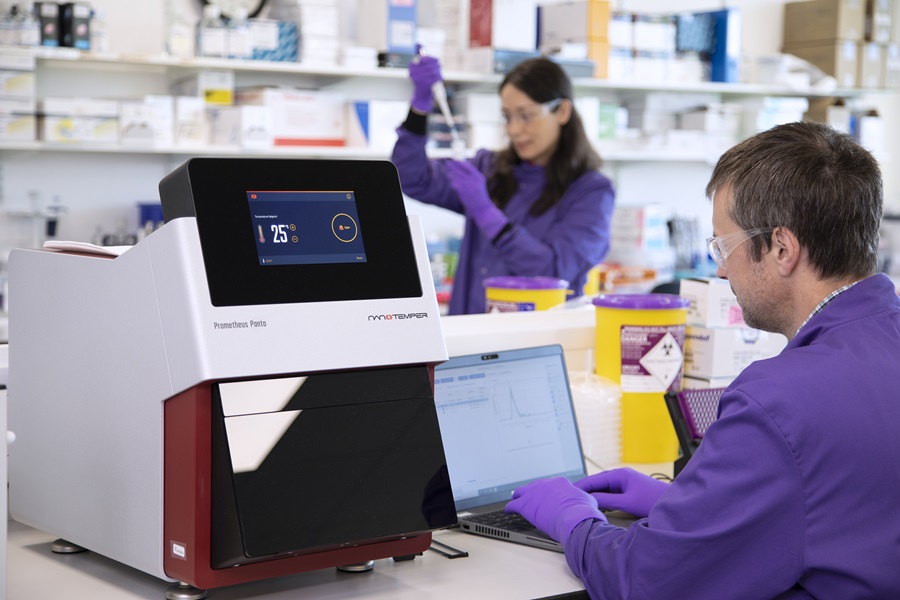Why Abzena?
Our focused approach.
PharmaTech Outlook’s recent issue features an article in which our Sr. Manager of Analytics, Dr Gary Watts, contributed which focuses on employing novel technologies and more patient-centric approaches that help to reduce the potential of formulation failure.
A swelling population that is aging and increasingly suffering from chronic conditions is leading to a greater demand for bio/pharmaceutical products. However, developing a bio/pharmaceutical therapy is a long and expensive journey that does not always end in commercial success or even, for many drugs in the pipeline, commercial viability at all. In fact, according to research, attrition rates for drug candidates remains stubbornly high, sitting at around 90% for those drugs that have reached the Phase I trial stage (1).
Some key trends impacting many industries worldwide, including the bio/pharmaceutical industry, are digitalization and robotics. These trends are also expected to positively impact drug formulation by improving efficiencies and, hence, lowering the potential risk of failure.
“Digital enablement, in general, is gaining momentum, with around 75% of business-to-business customers preferring engagement with digital platforms over in-person interactions,” remarks Shahrzad Missaghi, senior manager, Product Development at Colorcon. “Intuitive digital platforms empower companies to make the right decisions at the start of the process and reduce formulation iterations.”
According to Sibaji Biswas, executive director and chief financial officer at Syngene International, machine learning (ML) and artificial intelligence (AI) have the potential to provide the bio/pharmaceutical industry with significant opportunities to enhance the formulation process and avoid potential failures. “For example, AI and ML technologies are already being increasingly used to predict drug–excipient interactions, which allows for the rapid selection of optimal formulation compositions,” he says. “These predictive models are also employed in the pharmaceutical space to forecast the properties of drug products, such as tablets, based on data sets generated during development.”
In concurrence, Himanshu Gadgil, CEO, Enzene, notes that ML and AI are proving to be transformative for many industries and offer significant formulation advantages by way of improved efficiency and effectiveness. “ML leverages vast amounts of historical data to predict outcomes and identify trends,” he says. “By analyzing [these] data, AI can anticipate the properties of new formulations and validate them before they undergo costly laboratory testing. This capability not only streamlines the development process but also reduces costs by identifying potential issues early on, thus minimizing the risk of failures.”
Some customized generative pre-trained transformer or open-access platforms, such as FormulationAI, are being developed specifically around formulation development, asserts Vincent Levet, director, Formulation Development and Production, Ardena. “[These platforms are] offering solutions that can enhance the creativity of scientists, for instance by helping to review literature very quickly, evaluate compounds through predictive models, or support the actual formulation process by generating design of experiments (DoEs) studies and help to analyze the data,” he says. “However, as it is still in its early stages, it’s important to mention that the adoption of AI also brings concerns regarding IP [intellectual property] protection and potential data breaches, which is particularly crucial as companies must protect their pipeline to survive.”
“AI is [only] as good as the data used to train it,” warns Hanns-Christian Mahler, CEO and board member of ten23 health. While AI is a tool that has the potential to provide value in formulation development, it is important to start off with expert knowledge and an understanding of specific liabilities and challenges of molecules or therapeutic modalities—the critical quality attributes (CQAs), he adds.
“Adequately large data sets of molecules that are characterized in depth and where differences and similarities are well understood, in combination with expert knowledge, can effectively guide and train AI,” Mahler says. “Sadly, most companies do not have such large data sets by themselves, so some cross-company initiative may be needed to support such developments.”
The large datasets, such as those seen in other AI applications used in other industries, are simply not available yet within the bio/pharmaceutical field, agrees Bernard Sagaert, CEO, etherna. “However, making sure that your data [are] structured in a way that makes [them] accessible to perform the first steps in AI and ML has helped [the industry] already in limiting screening efforts and predicting certain pathways to follow,” he says.
For Vinay Patil, product development manager at Sharp Services, the focus for AI and ML tools will be placed upon gaining efficiency in target identification. “[Because] formulation development can only begin once a target compound has been identified and characterized, I expect that more AI/ML efforts will be made in the drug formulation process as the technology matures, and once the industry gains additional experience and, more importantly, success in the use of AI for drug discovery,” he affirms.
At Abzena, an integrated biologics contract development and manufacturing organization (CDMO) and contract research organization (CRO), AI and ML are being leveraged to create a model that is capable of predicting formulation stability over long-term storage using early-stage data, adds Gary Watts, senior manager in Analytics, Abzena. “This model has been validated with multiple formulations of various therapeutic molecules and is particularly beneficial in projects with tight timelines driven by client needs,” he says.
“With the use and evolution of ML and AI, companies have a greater ability to prototype quickly and in a more cost-effective way,” continues David Ferrizzi, director of New Product Development, Colorcon. This ability affords companies opportunities to tackle challenges that may have been insurmountable previously. “For example, certain diseases that were not a focus before are now coming into focus,” he says. “Personalized medicine and a focus on speed and lower total cost are also enhanced as a result of ML and AI.”
